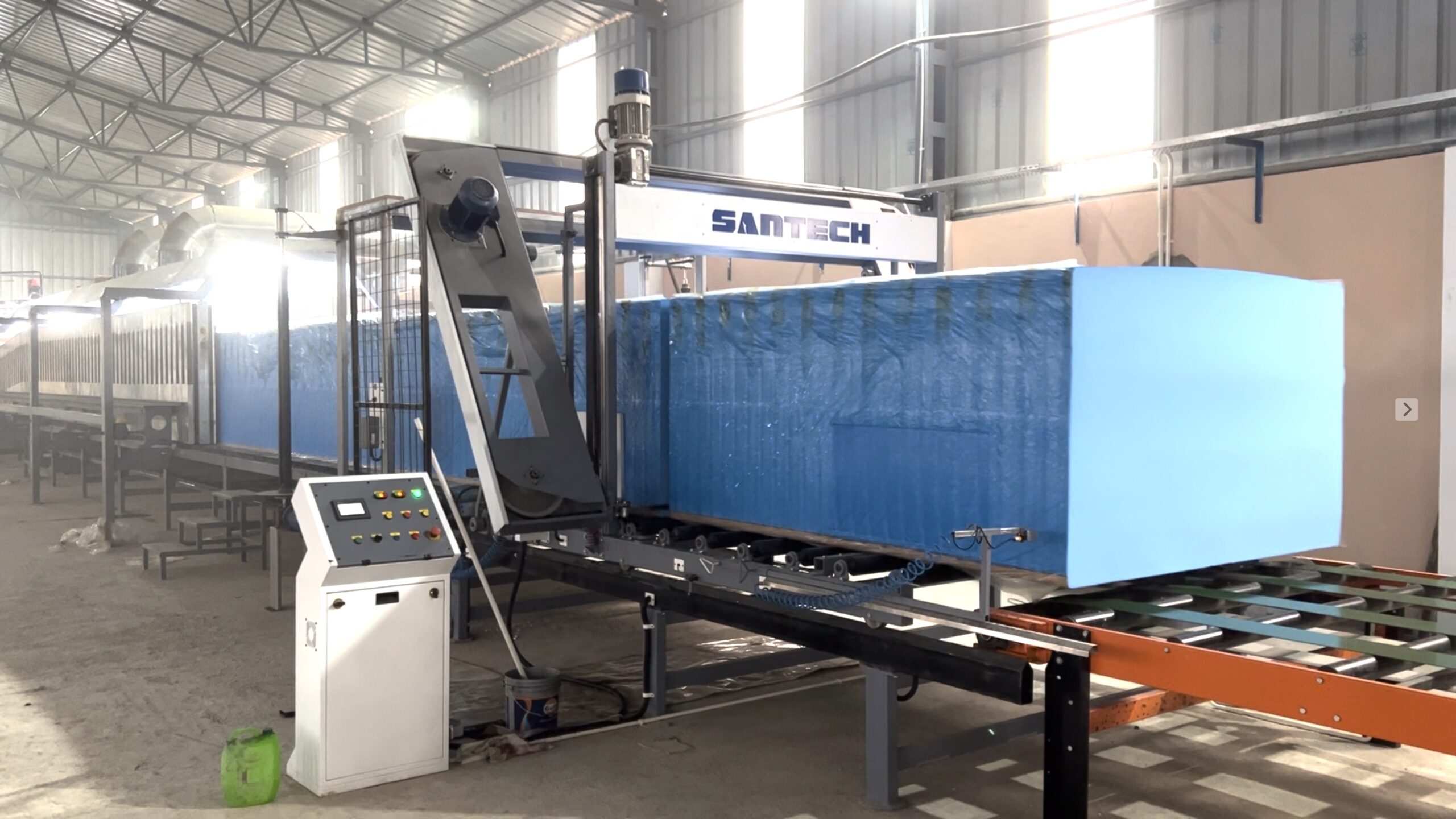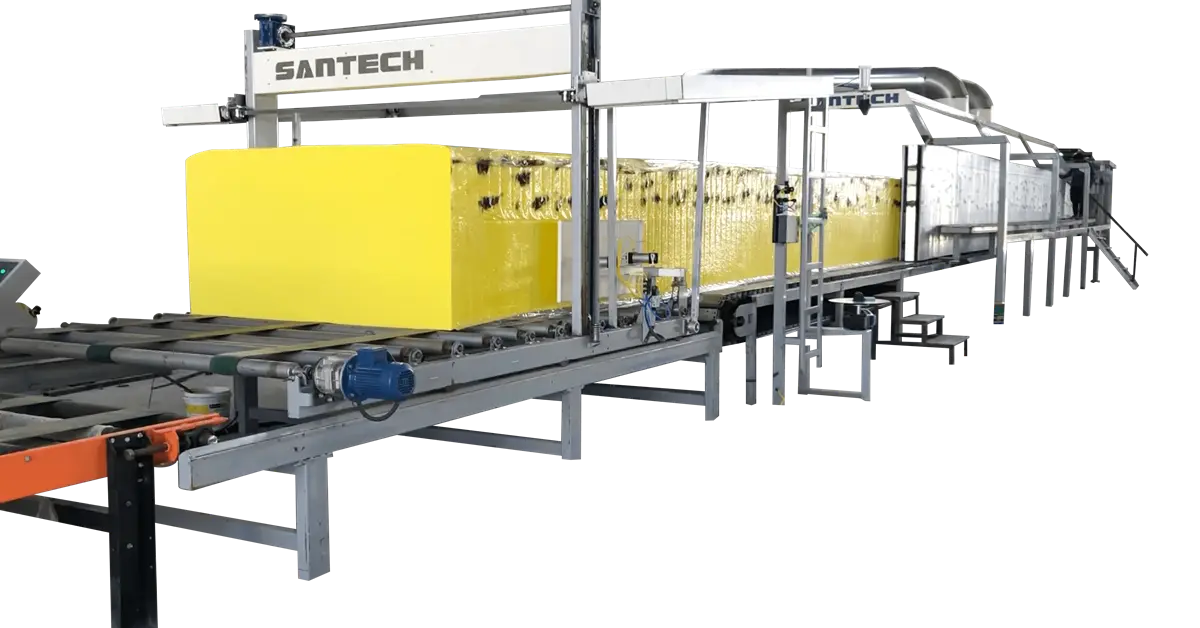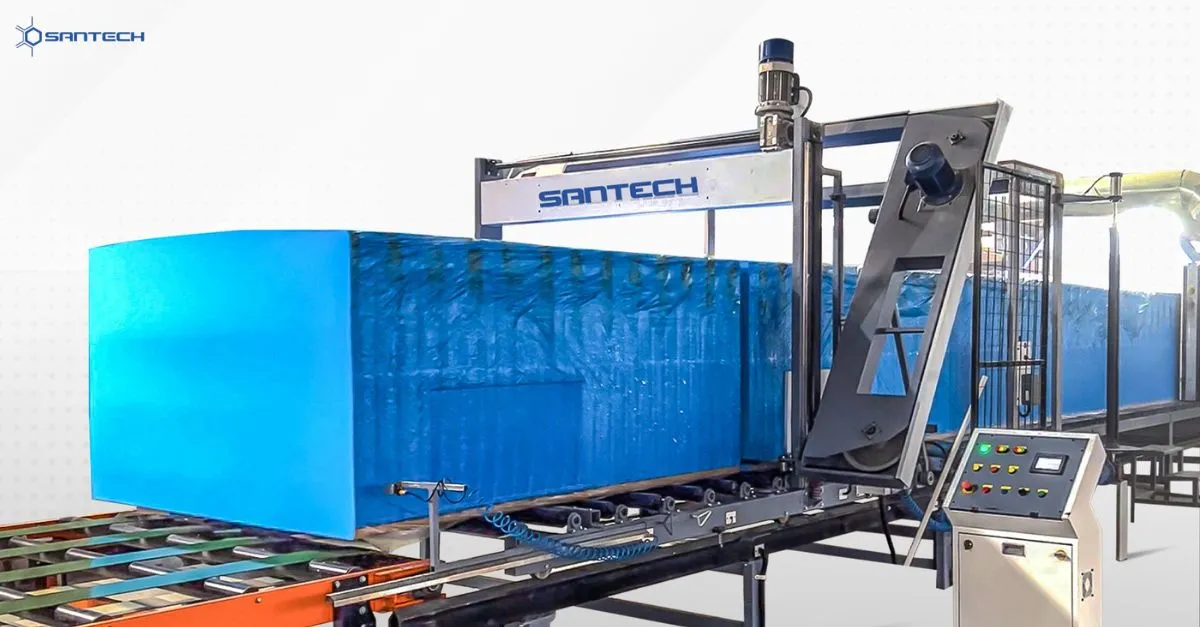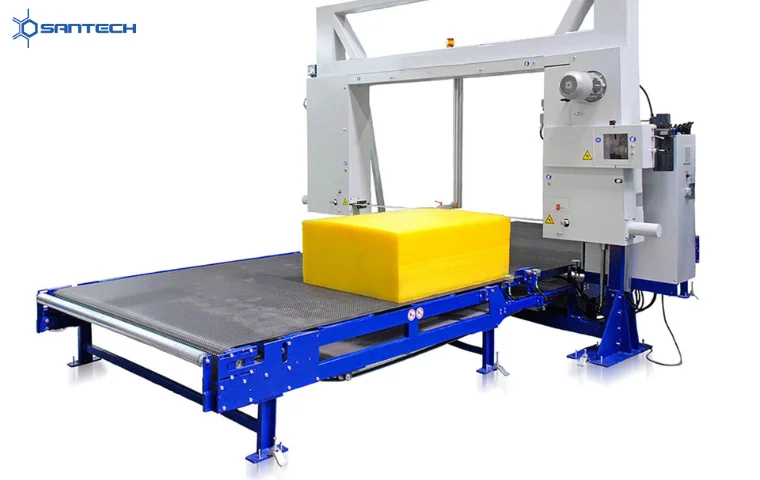Manufacturers are continuously looking for ways to save costs without compromising the quality of the product in today’s cutthroat industrial environment. Continuous foaming devices are one piece of technology that has succeeded in reaching these objectives. Numerous advantages of these cutting-edge devices might result in significant cost savings and enhanced product quality. In this blog, we’ll look at how these machines can lower costs and improve the efficacy of foam industrial processes. But first, let’s define a continuous foaming machine.
1. Understanding Continuous Foaming Machines
Continuous foaming machines are advanced equipment designed to streamline and optimise the foam production process. They revolutionise traditional batch foaming methods by enabling a continuous and automated process.
A. The Concept Of Continuous Foaming
Continuous foaming refers to the uninterrupted production of foam products. Instead of producing foam in batches, continuous foaming machines enable a seamless and continuous flow of foam production. This ensures a consistent and efficient manufacturing process.
B. How Continuous Foaming Machines Work
Continuous foaming machines consist of various components, including mixing chambers, metering units, and conveyor systems. The process begins by mixing the raw materials, such as polyurethane (PU) or polyethene (PE), in the mixing chamber. The mixed material is then fed into the metering unit, which controls the flow and ratio of materials. The metered material is then injected onto a moving conveyor, which expands and solidifies into foam products.
Now that you know what it means, let us move towards understanding its cost reduction benefits.
2. Cost Reduction Benefits Of Continuous Foaming Machines
These machines offer several key advantages that help manufacturers reduce costs in their foam-based industrial processes.
A. Enhanced Raw Material Utilisation
These machines optimise the utilisation of raw materials, minimising waste and maximising yield. The precise metering system ensures accurate ratios and eliminates material overuse. This reduction in material waste leads to substantial cost savings, especially when working with expensive foam materials.
B. Increased Production Efficiency
These machines significantly enhance production efficiency compared to traditional batch-foaming methods. The continuous flow of foam production eliminates the need for frequent start-ups, shutdowns, and cleaning processes associated with batch foaming. This reduces downtime and increases overall production capacity, leading to cost savings through higher output.
C. Reduced Labour Costs
These machines automate the foam production process, reducing the need for manual labour. Manufacturers can save on labour costs, including wages, training, and associated expenses, with minimal human intervention. Additionally, by minimising human error, these machines ensure consistent quality and eliminate the costs associated with defects and rework.
Let us now look at how it can improve the quality of foam cutting.
3. Improving Quality With Continuous Foaming Machines
Continuous foaming devices reduce costs and significantly improve the quality of foam-based products.
A. Consistency In Foam Density
Maintaining consistent foam density is crucial for achieving desired product performance. These ensure precise control over the mixing and metering, resulting in consistent foam density throughout the production run. This consistency translates into reliable and predictable product quality, meeting the strict specifications of various industries.
B. Enhanced Foam Structure And Cell Uniformity
The continuous foaming process allows for improved foam structure and cell uniformity. As the foam expands and solidifies on the moving conveyor, it forms a uniform, homogenous structure with evenly distributed cells. This results in foam products with superior mechanical properties, such as improved strength, flexibility, and insulation capabilities.
C. Minimised Defects And Variations
Traditional batch foaming methods often suffer from inconsistencies and defects due to variations in mixing, curing, and other factors. These machines mitigate these issues by providing a controlled and consistent production environment. This significantly reduces defects, variations, and rejects, improving product quality and reducing associated costs.
Now that you know how the continuous foaming machine benefits foam cutting, let us quickly look at the advantages of investing in these machines.
Advantages Of Investing In Continuous Foaming Machines
Investing in these machines offers several advantages beyond cost reduction and quality improvement.
A. Improved Energy Efficiency
Continuous foaming devices are designed to optimise energy consumption throughout the production process. Advanced insulation and heating technologies reduce energy wastage, resulting in lower operational costs. By reducing energy consumption, manufacturers can minimise their environmental impact and enhance sustainability practices.
B. Flexibility In Product Customisation
These machines provide manufacturers with greater flexibility in product customisation. The machines can accommodate various foam formulations and densities, allowing for the production of a wide range of foam-based products. This versatility enables manufacturers to meet diverse customer demands and expand their product offerings, increasing market opportunities.
C. Competitive Edge And Market Expansion
Manufacturers gain a competitive edge in the market by adopting continuous foaming technology. Producing high-quality foam products efficiently and cost-effectively enhances their market position. Moreover, these machines’ improved quality and customisation options can attract new customers and open doors to new industries and applications.
Real-World Success Stories
Real-world examples demonstrate the effectiveness of continuous foaming machines in reducing costs and improving quality.
A. South Fork Industries’ Case Study
South Fork Industries, a leading foam manufacturer, implemented continuous foaming machines in their production processes. By embracing this advanced technology, they achieved remarkable cost reduction and quality improvement results. Its enhanced raw material utilisation capabilities allowed South Fork Industries to optimise production efficiency. They minimised material waste and maximised yield, resulting in significant cost savings. The machines’ precise metering system also ensured accurate ratios, eliminating material overuse and reducing associated expenses. With increased production efficiency and reduced material costs, South Fork Industries experienced a substantial decrease in overall manufacturing expenses.
B. Santech Foam Machines’ Experience
Santech Foam Machines, a renowned provider of foam machinery, has witnessed numerous success stories from manufacturers who invested in continuous foaming machines. For instance, one of their clients, a foam packaging company, significantly reduced costs while enhancing product quality. By incorporating continuous foaming technology, they achieved higher productivity due to the elimination of batch foaming-related downtime. This streamlined process allowed them to meet customer demands more efficiently and reduced labour costs associated with manual intervention. The improved foam density consistency ensured that their packaging materials met stringent quality standards, leading to increased customer satisfaction and fewer product returns. The cost savings achieved through reduced labour and improved quality positioned the company for growth and expansion in the competitive packaging market.
Wrap Up
Continuous foaming machines offer numerous benefits for manufacturers, reducing costs and improving quality. Additionally, they ensure consistent foam density, enhance foam structure and uniformity, and minimise defects, leading to higher-quality foam products. Investing in them also brings advantages. Real-world success stories further highlight the value of these machines.




